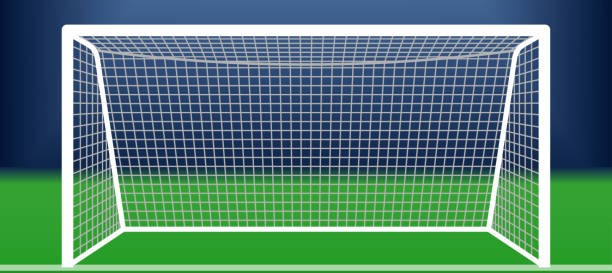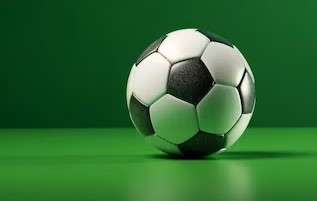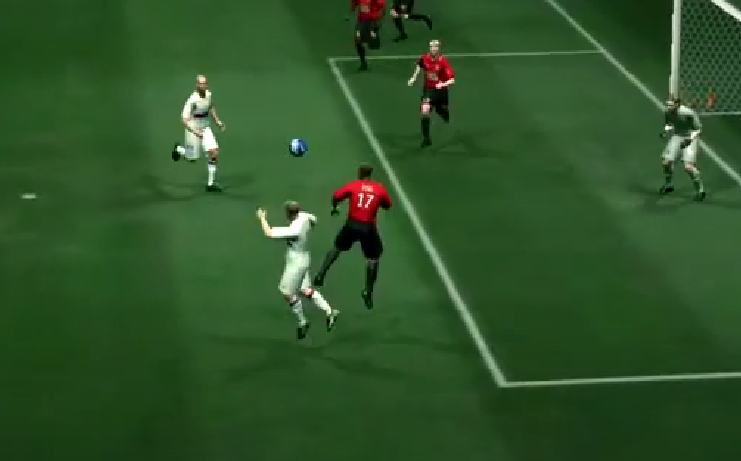













HEADING THE BALL.

Heading the ball in football is an important skill used to control, pass, or shoot the ball with your head.
It requires proper technique, timing, and body positioning to ensure accuracy and safety. Here’s how to head the ball
effectively:
Body Positioning:
- ▫ FEET: Stand with your feet shoulder-width apart for balance.
- ▫ KNEES: Keep your knees slightly bent so you can jump or adjust your position quickly.
- ▫ TORSO: Lean slightly back when preparing to head the ball. This helps with generating power.
- ▫ EYES: Keep your eyes on the ball at all times to track its path and anticipate when and where to head it.
Head Placement:
- ▫ FOREHEAD: Always make contact with the ball using your forehead (the area just below the hairline). This part of the head is the hardest
and allows for more control and power.
- ▫ AVOID THE TOP OF THE HEAD: Heading with the top of your head or the back can lead to poor control and may increase the risk of injury.
- ▫ NECK AND UPPER BODY: Use your neck and upper body to power the header. Don’t rely just on the force of the ball hitting your head;
instead, actively drive your head toward the ball.
Types of Headers:
- ATTACKING HEADER (POWER HEADER):
▫ Used to score goals or clear the ball with force.
▫ Jump toward the ball and make a strong, forceful contact with your forehead.
▫ Use your arms to generate extra momentum by swinging them as you jump.
▫ Direct the header toward the goal by aiming for the corners to make it harder for the goalkeeper to save.
- DEFENSIVE HEADER:
▫ Used to clear the ball out of danger.
▫ Jump up and head the ball with power to get it away from your goal area.
▫ Aim to send the ball high and wide or toward a teammate.
- GLANCING HEADER:
▫ Used to redirect the ball with finesse.
▫ Instead of hitting the ball squarely, you use the side of your forehead to deflect the ball’s path.
▫ Often used when trying to flick the ball on to a teammate or goalward with a slight touch.
- FLICK-ON HEADER:
▫ Used to keep the ball moving forward, often on long passes or crosses.
▫ This is a quick, short header with minimal power, aimed at guiding the ball to a teammate.
Timing and Anticipation:
- ▫ JUDGING THE BALL'S PATH: Time your movement so that you meet the ball at its highest point or when it’s most advantageous for
your team.
- ▫ JUMPING: Time your jump to meet the ball at the peak of your leap for maximum height and power.
- ▫ POSITIONING: Place yourself in the best position to meet the ball with your forehead, whether it’s an attacking or defensive
situation.
Neck and Upper Body Movement:
- ▫ NECK SNAP: When you make contact with the ball, snap your neck forward for power. This movement should be quick and controlled.
- ▫ UPPER BODY: Your upper body should lean slightly forward as you head the ball to add momentum and ensure accuracy.
Eyes Open:
- ▫ Keep your eyes open and on the ball all the way through the header to ensure you make clean, accurate contact. Closing your eyes
too early can lead to missed or mistimed headers.
Safety and Heading Techniques:
- ▫ HEADING SAFETY: To reduce the risk of injury, especially concussions, always head the ball with your forehead and ensure proper
technique. Players should also avoid head-to-head collisions by being aware of their surroundings.
- ▫ AVOID HEADING WITH THE CROWN: Heading with the top of your head (crown) can increase the risk of injury. Always aim to use the hard,
flat part of the forehead.
- ▫ PROTECT YOURSELF: Use your arms for balance, but also to shield yourself from opponents.
Common Situations for Heading:
- ▫ CROSSES: Headers are frequently used to finish crosses from the wings, redirecting the ball toward goal.
- ▫ GOAL KICKS: Players often use heading to flick on or redirect long goal kicks.
- ▫ CORNERS AND SET PIECES: Headers are a key tool for both attacking and defending during corners and set pieces.
- ▫ CLEARING: Defenders often use headers to clear high balls out of their defensive area.
Practice:
- ▫ Repetition and practice are key to becoming comfortable with heading. Start by practicing with a stationary ball,
then gradually incorporate headers from passes and crosses at different speeds and angles.
Key Tips:
- ▫ Stay calm and focused when heading.
- ▫ Use the power of your neck and upper body to control the force of the ball.
- ▫ Practice heading in different situations to improve accuracy and timing.
By mastering these aspects, you’ll improve your ability to head the ball confidently and effectively in both attacking
and defensive situations.




























